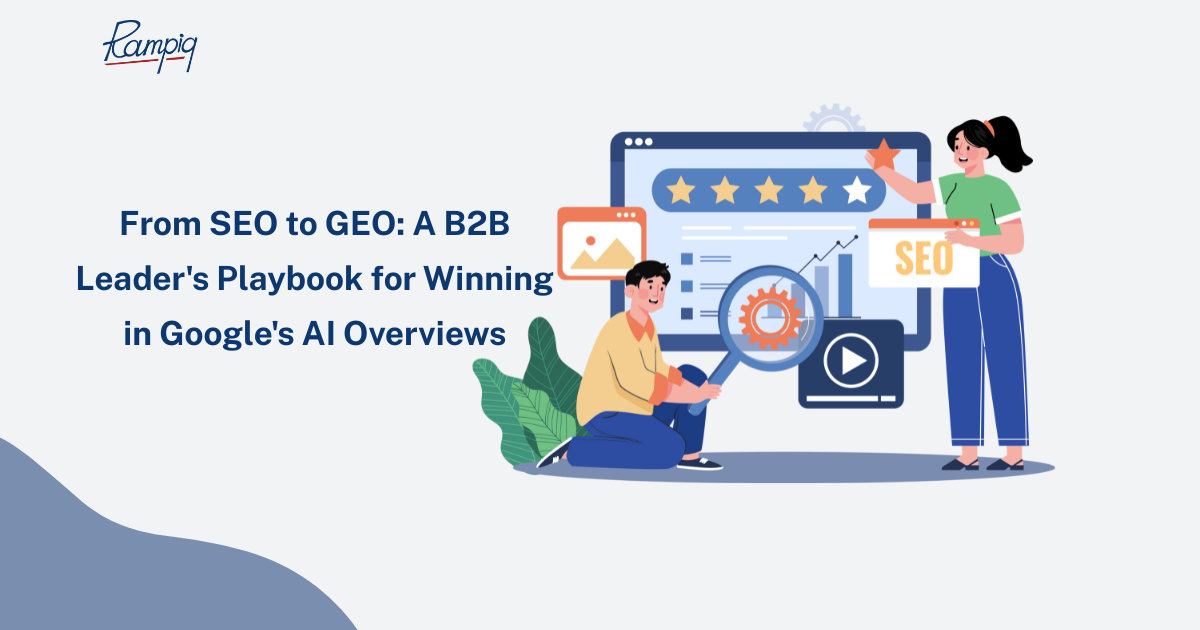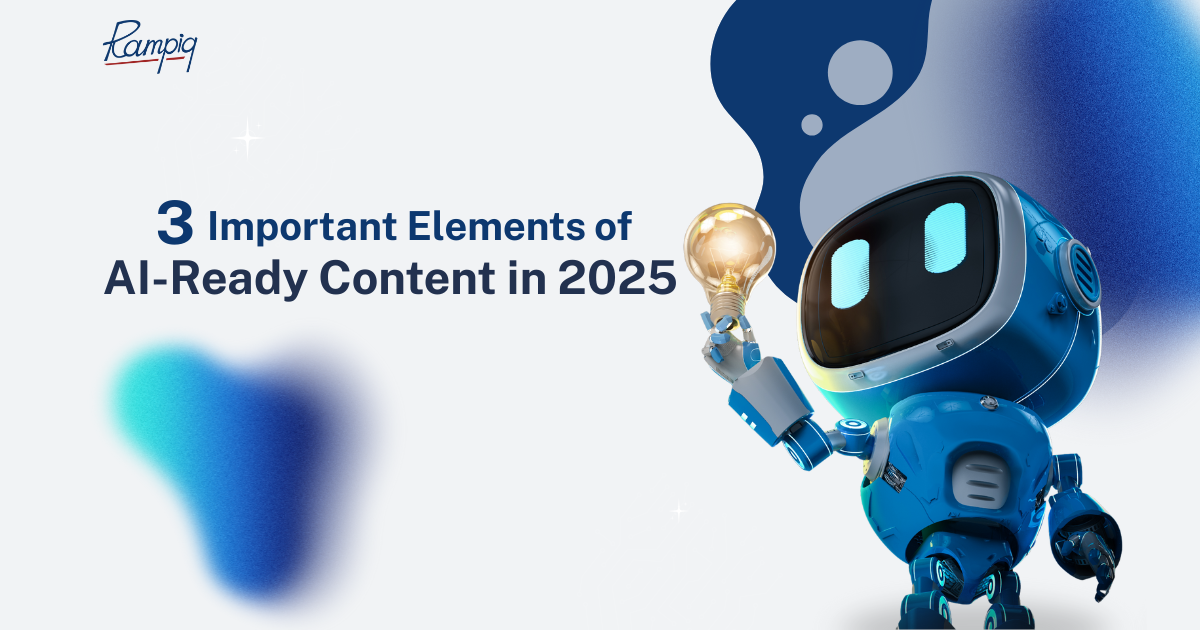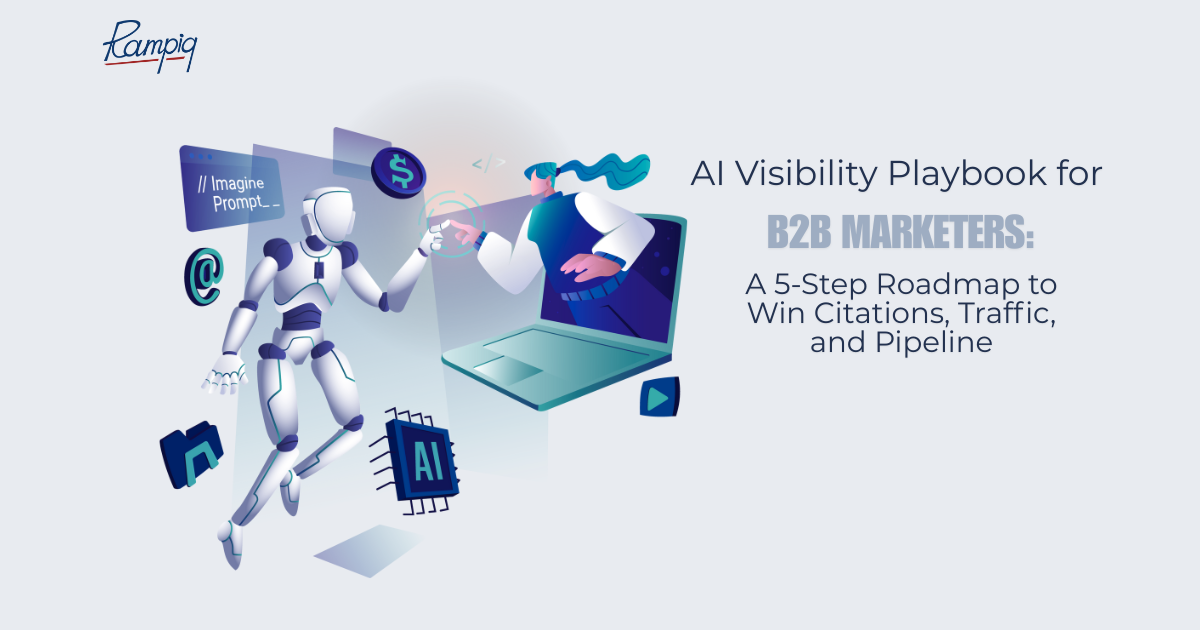The New Reality: Your Organic Traffic Is Disappearing
If you’ve watched your organic traffic decline recently, we’re with you. For years, B2B marketers have relied on Google as a bottom-of-the-funnel tool. Now, that’s changed.
The main reason is the AI takeover. These AI-generated answers sit at the very top of the results, creating a wall between a user’s query and the organic links we’ve worked so hard to rank.
People just stopped clicking. You stopped clicking. Why? Because Google doesn’t let us.
The search results page has become a super busy, volatile space. It’s packed with expandable sections, callouts, videos, and icons, all before you get to the first organic result. On desktop, it can take two full scrolls just to find what used to be the #1 spot.
On mobile, things go absolutely intense and wild. A user might scroll for nearly half a minute past AI-generated content, TikTok videos, and Reddit threads before they even see the first organic link.
We timed it: “27 seconds. This is how long it will take now for an average user to get to… page number one ranked number one on Google.” This is the disruption every B2B marketer is facing, and it presents a huge pipeline risk.
From SEO to GEO: The Framework for AI Search Visibility
This new landscape demands an evolution in our strategy: a move from just SEO to GEO (Generative Engine Optimization) to win in AI Overviews. These GEO principles, which kicked into “full speed” around late 2024, are the key to adapting.
And the really awesome and good news? There is the AI Search Visibility Framework. We designed it, we tested it, and it’s working. By shifting focus from just ranking to being featured in AIOs, we’ve scaled our B2B Tech clients’ visibility in AI Overviews from a handful of placements to hundreds. It requires a new way of thinking, but the results are tangible and the wins are real.
A 5-Step Playbook to Win AI Overviews

This is the process, the clear pathway to understanding where you stand, where you can go, and how to get there.
First, you have to establish a baseline. You need to know where you already appear in AI Overviews. This shows you what’s working right now. Using a tool like Ahrefs, you can filter your domain’s organic keywords to see only those where your URL is currently featured. This analysis almost always reveals a huge gap.
Practical example from our CEO, Liudmila Kiseleva:
“When I audited our own agency website, I found that out of more than 300 keywords with AI Overviews, we were only featured in six. That’s a typical bummer. But I wasn’t blaming myself, because “this is a very typical situation for 90% of the websites that we audit.” So, in my book, that’s not a failure but an opportunity. It means you have a lot of work to do and clear targets for growth.”
Step 2: Map Your Total Addressable Market
Next, you need to understand the full scope of the opportunity. This means identifying the entire universe of keywords you rank for that have an AI Overview, whether you appear in it or not. In your SEO tool, filter your organic keywords to show all terms that trigger an AI Overview on the SERP.
This number defines your target. Speaking in sales language, “Now I know that my total addressable market… for AI overview dominance is around 300 words.” This reframes the objective entirely. You no longer aim to only rank but also to capture your addressable share of your most important AI Overviews.
Step 3: Pinpoint Growth Opportunities by Analyzing the ‘Why’
Once you know where you’re winning, you need to understand why. Dig into the specific content snippets that got you featured. When you see an Overview where your brand is cited, click the link back to your site. It will often take you to the exact sentence or paragraph that Google’s AI used.
When you follow those steps, you will see a pattern of what particular content, what particular keywords and pieces of content on your pages have been successfully helping you to be included in AI overviews. This is how we pinpoint the growth opportunities. This pattern is your formula for success. It allows you to turn six wins into 60, and then 60 into 600.
Practical example: check our recent AI Search case study on AIO wins.
Step 4: Implement Generative Engine Optimization (GEO) Principles
This is the engine behind the results; our secret sauce. Applying GEO principles means optimizing your content to be the most logical, authoritative, and useful source for an AI-generated answer. Our internal guidelines have over 17 touchpoints, but the core strategy comes down to these foundational principles.
The GEO Checklist:
- Be Factual & Data-Driven: Ground every claim in verifiable data. AI models are built to prioritize accuracy.
- Answer Directly & Concisely: Structure your content to provide clear, unambiguous answers. Get straight to the point.
- Use Structured Content: Employ lists, tables, and clear H2/H3 headings. This makes information easily digestible for both humans and machines.
- Signal Authority & Expertise: Demonstrate deep expertise and trustworthiness (E-E-A-T) through comprehensive content, clear authorship, and unique insights.
- Ensure Content Freshness: Regularly update your content. Freshness is a key factor, especially for hot topics.
- Cite Authoritative Sources: Back up your claims by linking to credible primary and secondary sources.
- Develop a Unique Point of View: Don’t just regurgitate facts. Publish first-party research or offer a strong, expert-led perspective that stands out.
Step 5: Measure What Matters for Pipeline
The final step is to measure success. It’s tricky because, as of now, “you will not be able to see the specific clicks from AI overviews.” Google doesn’t provide a direct metric. But you can build a powerful framework to track the actual impact on your business.
A 3-Part Measurement Framework:
- Establish Baseline KPIs: Your core metrics are the “Keywords where you appear in AI overviews” and the “Keywords where you can appear.” Your goal is to close the gap between these two numbers.
- Analyze in Google Search Console: For the URLs winning AI Overview placements, monitor their impressions and clicks in GSC. While it’s not a direct 1:1 correlation, you can see how this increased visibility affects that page’s overall traffic.
- Connect to Business Goals: The ultimate goal is to understand “how the presence in AI overviews affects traffic and pipeline.” Tie the traffic and conversions from these high-performing URLs back to your analytics and CRM to measure their true business impact.







